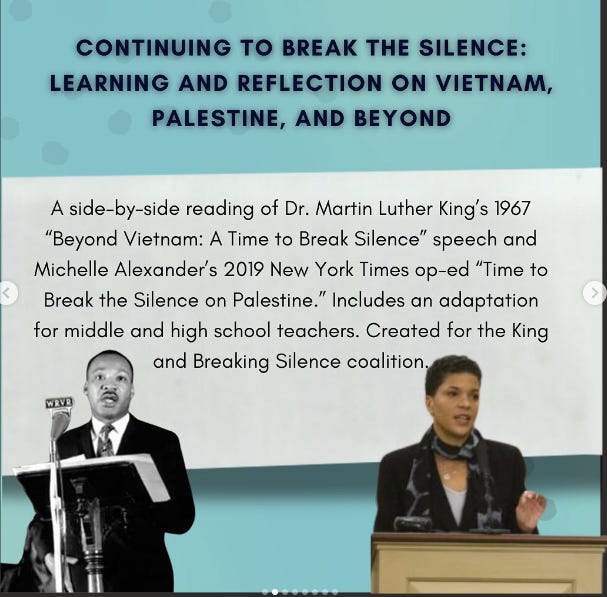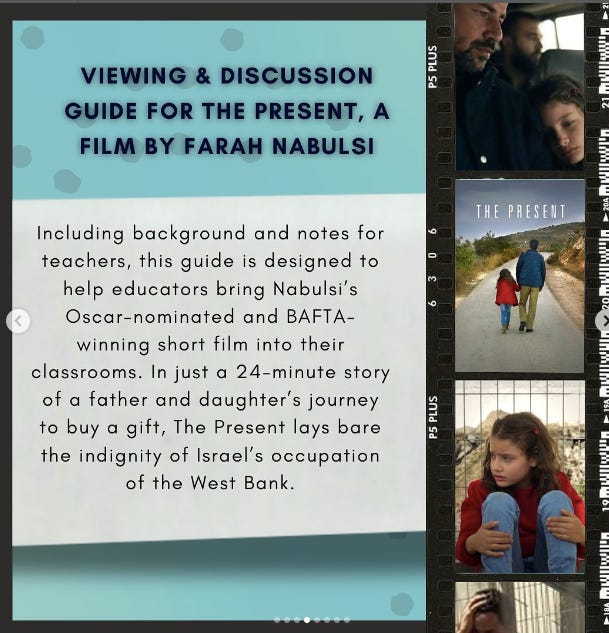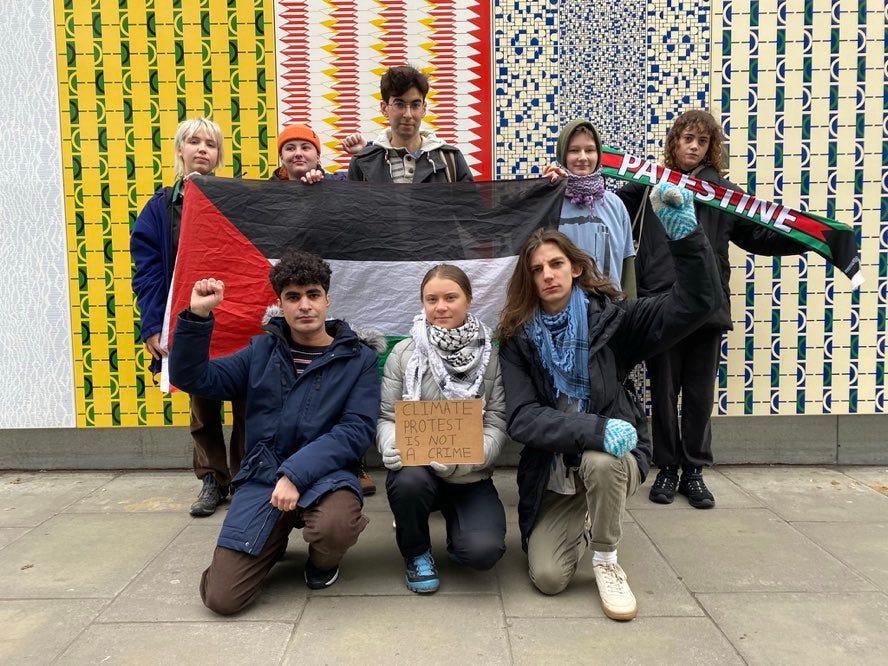Welcome to K12 extremism tracker
A central hub for tracking extreme ideology and antisemitism in K-12 schools
Teaching While Muslim and NY Educators for Palestine/ Teaching While Muslim and the Fellowship of Reconciliation
Below you will find evidence of TWM and NY Educators for Palestine and TWM and Fellowship of Reconciliation efforts to get anti-Israel material into middle and high school classrooms in the largest school district in the United States, New York, and New Jersey: including a planning webinar for middle school teachers; curriculum materials and resources for teachers.
1: February 2024, webinar hosted by TWM and NY Educators for Palestine
2:Educator Guidance on 2023 Israel-Palestinian Crisis in Gaza
Key quotes from “Educator Guidance” document:
“Israel-Hamas War” is a misnomer
Nearly all schools are using mainstream media’s framing of the current crisis as the “Israel-Hamas War.” This framing is incorrect and deceptive because:
Israel is attacking all Palestinians, not only Hamas and not only in Gaza
Hamas is not a state, and war is generally considered to be between two states
The framing implies symmetry and equality between Israel and Hamas when Israel is one of the strongest military powers in the world and Hamas is the defacto administrator of Gaza, which is under complete occupation, blockade, and siege by Israel
The Gaza Strip is occupied territory under international law. A state (Israel) cannot engage in war with the people whose wellbeing it is obligated to protect (Palestinians)
The framing “Israel-Hamas War” is destructive because:
It empowers the narrative that the October 7 attack by Hamas had no historical roots, that Israel is merely reacting in self defense, and that any efforts to eradicate Hamas are justified
It relies on decades of false and misleading information and racist propaganda against Hamas that paints it not as a Islamist resistance movement but rather as inherently terrorist and less-than-human, such that a political solution with them is completely impossible.
Student activism is both a right and a goal of education
“Understanding and Supporting Student-Led Activism” is an online course by Youth in Front designed around promoting and discussing student-led voice in civic engagement. Their aim is to provide all educators with a historical lens as well as tools and frameworks to equip adults as allies and supporters in the development of youth voice and activism.
“Supporting Student Activism” is guidance from Learning for Justice.
Palestine Legal offers Know Your Rights guidance for students.
CAIR’s “Guide for Students Speaking Out Against Islamophobia and for Palestinian Rights,” offers guidance for students and advocates seeking to speak and advocate effectively and safely in support of Palestinian human rights.
3. Bios of Break Room Facilitators and Topics
Key Quotes from Bios document:
Grade level: Middle School “In this breakout room, you will learn how to utilize lesson plans from the Teaching While Muslim site. Roula will use one lesson to show participants how to run through the lesson progression. She will also provide tips, and take questions, on integrating topics about Palestine throughout multiple disciplines. Her goal is to show other teachers how easy it can be to talk about Palestine in the classroom.”
“In this breakout room, participants will talk about the challenges of teaching about Palestine (both pedagogical and political), explore approaches for bringing Palestine into the curriculum at all ages, and walk through the robust resources available in her Unit Guide and on her resources page.”
4. Curriculum and Resources provided by TWM and NY Educators for Palestine
The goal is to get “Palestine” included in every class and at every grade level from Pre-K and up.
5. Teaching While Muslim/Fellowship of Reconciliation “Palestine” resources which seeks to conflate the history of the Civil Rights Movement with Palestine, compares the BDS movement to anti-Apartheid movements, and include lessons on Palestine in classes on WW1/WW2 and even the First Amendment
Lesson Plans:
Continuing to Break the Silence: Learning and Reflection on Vietnam, Palestine, and Beyond
Key Quotes from Breaking The Silence Lesson Plan:
“Where in her op-ed does Alexander point specifically to the role of the United States in supporting Israel in its occupation of Palestine and its violence against Palestinians? What examples does she present of U.S. complicity in this violence?”
“Where in Alexander’s op-ed can we see the people of Palestine? How does she show what decades of Israeli occupation and aggression have meant for Palestinians?”
On the challenges of sustaining nonviolent resistance
“His steadfast commitment to nonviolent social change notwithstanding, in “Beyond Vietnam” Dr. King is candid in his understanding of those who have taken up arms in the face of oppression. He acknowledges the disconnect between his insistence that young men in the “ghettoes of the North” solve their problems without Molotov cocktails or rifles and their too-true observations that the U.S. was solving its problems with “massive doses of violence” in Vietnam”
“For her part, Alexander reminds readers of the thousands of civilians killed and wounded in repeated Israeli attacks on Gaza, as well as countless other violations of Palestinians’ rights by Israeli soldiers, officials, and laws. And though she cites growing support for the nonviolent Boycott, Divestment, and Sanctions movement, Alexander notes the resistance it has faced.
“How can the passages from Dr. King’s speech quoted above (and/or other parts of the speech) inform our understanding of and action against the Israeli occupation of Palestine? Can his analysis, including his observations about the asymmetry of forces, provide insights as we talk about the ways people resist and why – in Palestine and in other places around the world?”
“In what ways does U.S. policy towards Israel reflect or bolster the racism, materialism, and militarism that Dr. King decried? Give specific examples from past and/or ongoing U.S. policy.”
Boycotts: Goals, Methods and Challenges From The U.S. To South Africa To Israel-Palestine
Key Quotes from Boycotts lesson plan document:
“This activity gives students a chance to apply the knowledge and insights they’ve gained from studying Martin Luther King and the Montgomery Story and broader issues of the bus boycott and the U.S. civil rights movement, including decisions that activists made about tactics and strategy. Using the Jigsaw strategy, students will examine (and hear their peers present) primary and secondary sources that address the right to boycott in the United States, how boycott and divestment campaigns supported the anti-apartheid struggle in South Africa, and current realities of and resistance to the Boycott, Divestment, and Sanctions (BDS) movement for Palestinian rights and self-determination.”
Young People Taking A Stand:
Examples of Young People Taking A Stand:
Ahed Tamimi -
Greta Thunberg -




















